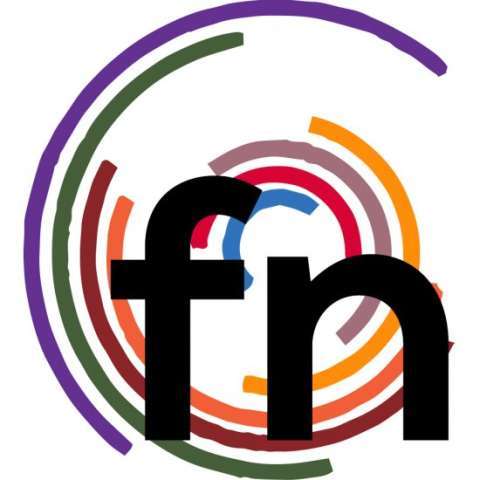For event marketers looking to email to get the word out on their event, the question then becomes: How do you stand out?
1. Make your email look great on mobile
It's a mobile world. Given the love affair with all-things-mobile, it's not surprising to learn that more people rely on their phones for everything from checking their email to RSVPing to an event.
What does that mean for event marketers? You have to make sure your email looks stunning on every device. Use an email service provider that offers responsive templates, which adapt to fit any screen size. Then, always make sure to preview your email on a mobile device before hitting “send”.
2. Make your email CTAs clear and bold
The call to action (CTA) in every email—be it an event invitation or a post-event survey—has to pop. The average subscriber spends about 11 seconds reading your email. That's right: 11 seconds. To compensate for this, you have to leverage well-defined elements that explain what your email is all about at a glance.
To create a unique call to action, opt for a button rather than a hyperlink. Buttons actually outperform hyperlinks by 33%. You should also make the CTA button a noticeable color; perhaps one that's not used, or barely used, in the email. In addition, keep your CTA copy short and concise.
3. Create interactive content and GIFs
When you only have 11 seconds to catch someone’s attention, the standard email won't cut it. You have to get more creative. Event planners are great in this arena as they rely on creativity to bring the wow factor to every festival, fair, or event that they run. So why not bring these talents to email marketing, too?
By using things like GIFs, videos, and interactive quizzes, you're tapping into that creativity digitally – and participants will reward you.
4. Make it easy to sign up for your newsletter
A newsletter is a great way to keep potential event attendees informed throughout the year, not just during the event. The easier you make it for people to stay-in-the-know by signing up for your newsletter, the more reach your event promotion will get. Here are some things to keep in mind:
-
Put a simple sign up form on your event website so people can join instantly.
-
Put the form in a highly visible spot, like on your home page.
-
Make sure it's as short as possible with just one or two fields to fill out.
5. Use a preference center to create targeted messages
Give people what they want—personalized emails. Seventy-four percent of marketers say targeted personalization increases customer engagement. The more relevant an email is to a subscriber, the more likely he or she is to engage with it.
Of course, you need customer data to personalize emails. Ugh, that sounds like a lot of work, doesn't it? It's not. By using an email preference center, you can gather customer information and know exactly what kind of content, messaging, and events a person is interested in.
6. Quantity and quality for list building
Every marketer in the event industry wants a big list of contacts to reach out to for their next event, but list size isn't going to give you the most bang for your buck. Instead, focus on list quality and your target audience. It's better for your event marketing strategy to have 100 names that are already excited about your event than it is to have 200 not-so-interested people on your list. To make sure you're collecting quality leads, make sure you:
-
Use a double opt-in process
-
State your intentions in the first email
-
Send emails with your subscribers in mind
-
Give subscribers a clear, easy way to unsubscribe
7. Avoid being flagged as spam
Consumers are redefining what qualifies as spam. Spam used to be equated to a scam, not so today. Today, thirty-six percent of spam is advertising.
To stay out of the spam folder, make sure you are building a quality list of subscribers, only emailing people who opted-in for your campaign and keeping your emails relevant and engaging.
8. Use smart content to increase click-through
Smart content is a game-changing tool that gives you the power to alter a piece of your email based on the subscriber receiving it. For example, you could dynamically change the image in an email based on a subscriber's location.
9. Use both original and curated content
Creating content like blog articles, infographics, and videos are great promotion strategies for in-person events or online events. But great content can be time-consuming to make. Fortunately, research suggests consumers respond to a healthy combination of both original and curated content.
10. Use strong images to drive engagement
Research shows that 65% of readers in the US prefer image-heavy emails. This is great news for promoting your event. Pictures of the location and venue help your readers see the value in attending your event. Including images that show people's faces help engage subscribers by allowing them to see themselves attending your event.
11. Know your audience
There are a lot of ways to know your audience, like collecting customer data, conducting surveys, and, that age-old classic, asking for feedback. Once you know your audience, you can utilize event email segmentation to send only relevant information to the people who are already interested in any of your future events.
12. A/B test to improve every email
While experimenting is great, you still need a way to measure your success, preferably before it’s too late for the results to do you any good. Enter A/B testing. By creating two slightly different emails and sending them to a small subset of contacts, you can see which email subscribers prefer and which one delivers the best results.
13. Measure performance over time
Just like the A/B test allows you to track your results immediately, don’t forget to keep an eye on your event metrics over time to see which emails perform best. Key metrics like opens, clicks, and conversions allow you to see what works for your audience and what doesn’t.
Email is just one aspect of an event marketing plan, but it's an important one. Email has the power to reach a large set of contacts, keeping them informed and encouraging them to participate in events. Using the tips above, you'll be able to nail your next campaign and see the kind of metrics you want.
ARTICLE: Grace Miller for Bizzabo



